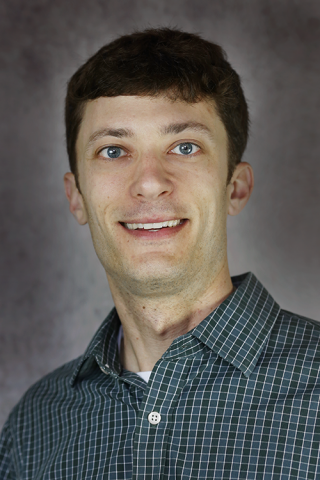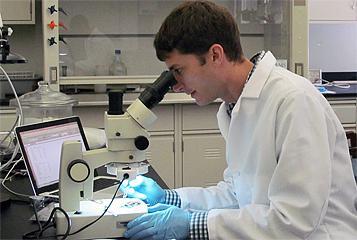Meet Dr. Brian Schubert: Interview with a Geology Professor at UL Lafayette
Meet Dr. Brian Schubert, assistant professor in the UL Lafayette School of Geosciences since January 2013. He is one of two geology master’s program graduate coordinators and heads the stable isotope geochemistry lab (Schubert Lab), where master’s in geology students study how plants respond to changes in climate and atmospheric chemistry. 
“We look at how a plant growing outside today is responding to changes in temperature, precipitation, and carbon dioxide, and we look at relationships between chemical changes within that plant and these different environmental parameters,” Dr. Schubert explains. “We’re trying to figure out ways of determining how these different environmental parameters have changed in the past.”
Dr. Schubert’s research requires digging up fossil plants and using stable isotope measurements to determine their chemical composition. Examining the fossilized plants’ chemical composition provides insight about the temperature, precipitation, and carbon dioxide levels in the atmosphere at the time the plant was fossilized. By studying fossil plants from specific time intervals in the Earth’s history, his lab can determine the atmospheric carbon dioxide levels up to 400 million years ago.
Most of Dr. Schubert’s research is conducted in the Arctic, an area that is rapidly changing and is still largely unexplored. He visits former forests in many remote locations around the world, including Alaska, Siberia, and northern Canada to extract these fossils and bring them back to the geology master’s program at the University of Louisiana at Lafayette for analysis.
"For my work, you need the fossil plants and you need them to be of the right age for a time period when climate was fundamentally different or carbon dioxide levels were fundamentally different,” he says. “When you find a giant cypress log at 76 north latitude, you know something was fundamentally different that allowed this tree to be here. So then you figure out why, and what that means.”

That research has applications for both the energy industry and for additional environmental research.
“At the fundamental level, we’re studying organic matter derived from photosynthetic life, and that’s the same material that makes up our coal, our oil, our energy resources,” he says. “In addition to that, models for the next 100 years are based on the geologic evidence that we have. We have temperature records and satellite data, but it only goes back 20 to 30 years so it’s not long-term records—and that makes it hard to see what the trend is when you have such a short snippet of time.”
The fusion of energy and environmental research, he says, along with the absence of a doctoral program is what makes the master’s in geology at UL Lafayette a unique experience for students.
“A lot of geology graduate programs focus on either the exploration side or they’ll focus on the environmental side, but here it’s very interdisciplinary, looking across chemistry, physics, and geology,” Dr. Schubert says. “And I think that because we don’t have a PhD program, it gives the master’s students an advantage because they’re the main research engines. That’s nice, when you’re a first-year master’s in geology student and you’re working on a really integral part of a key project.”
Learn more about our geology master’s program >
